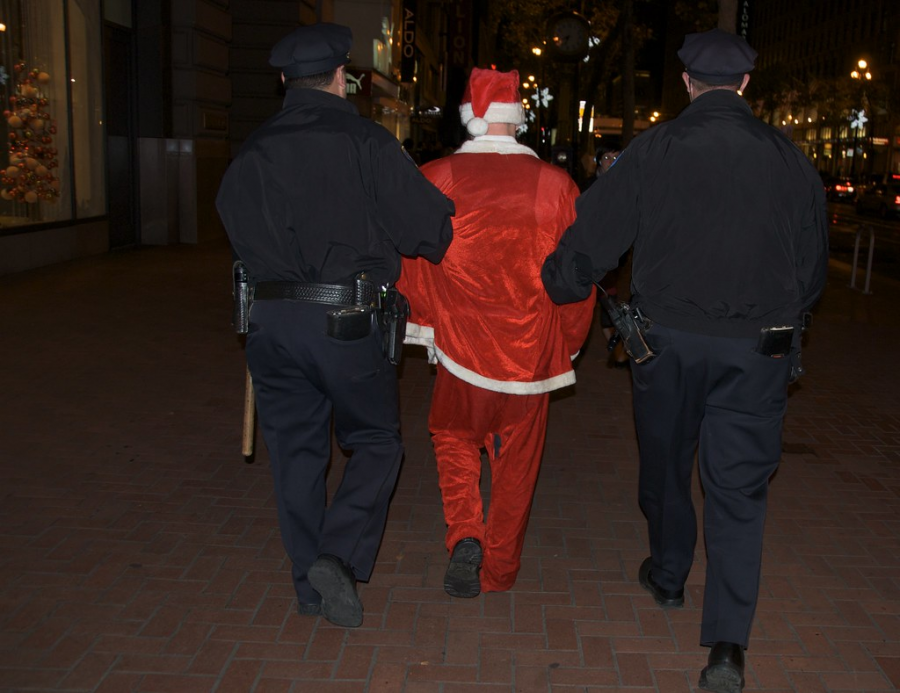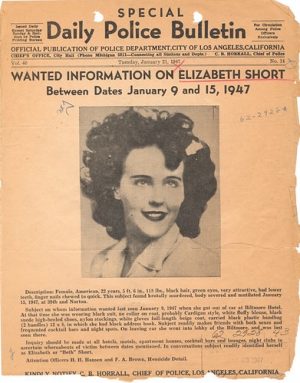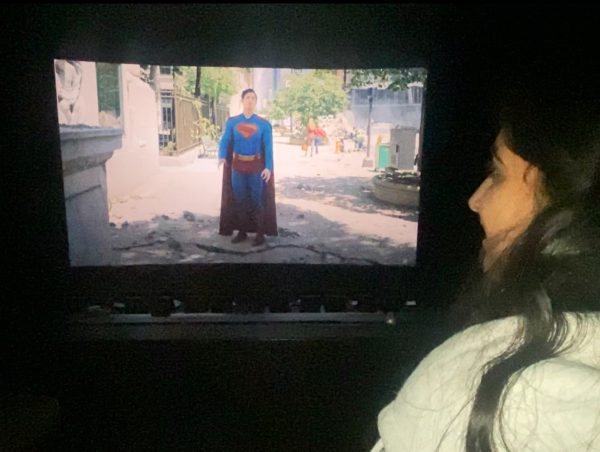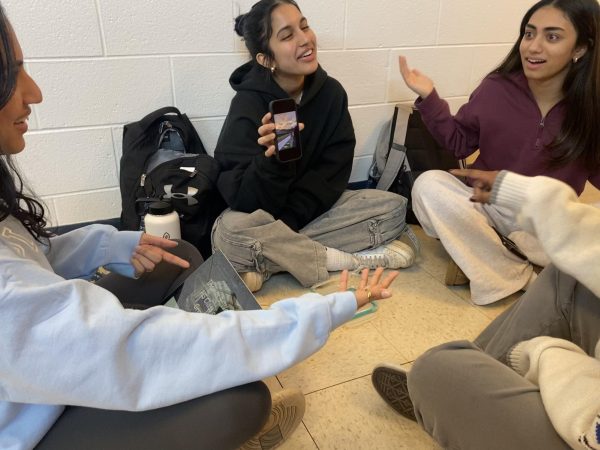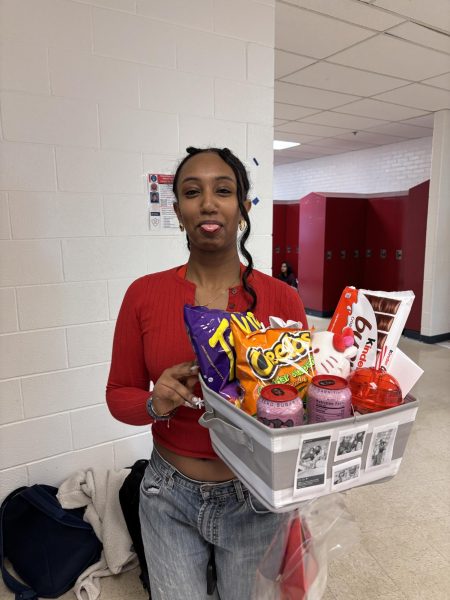Poisoned Apple: Holidays turns grisly with murder on Christmas
Photo by Steve Rhodes, used with permission from Google Commons
A man dressed as Santa gets arrested at Santacon in 2008.
It is widely believed that rates of domestic violence spike during the holidays during the most festive time of the year as a result of extended family crammed together and forced to interact. Fortunately, these incidents are actually quite rare and only seem more frequent in this time than the rest of the year because they are reported more.
There are three most common reasons for the increase of violence during the holidays. The first is economic stress, which becomes more apparent to a struggling family during the holiday season. Another is the stress of the forced intimacy of family dinner, along with distant relatives feeling the obligation to spend time together. The third reason is the “happiness gap”; the TV advertisements and social media portrayal of how loving and wonderful families can be, and how stress-relieving family reunions should be. This happiness, of course, is an illusion.
Here are two holiday murders that happened during the “best time of the year” in the U.S..
Christmas Eve, 2008, in Covina of the Los Angeles suburbs: Bruce Jeffrey Pardo showed up at a holiday party wearing a festive Santa Claus costume. An eight-year old girl answered the door, but Pardo wasn’t invited. Pardo opened fire on his ex-wife Sylvia Ortega Pardo and about 25 of her guests, including the young girl, before unwrapping a gift he had brought for the family: a homemade flamethrower. He started a fire that consumed the entire house, and took his own life shortly after. Pardo had recently finalized his divorce the week before and police speculate that this was the trigger that led to his massacre of nine people, including Sylvia and her parents. According to Dr. Reneé Carr, a clinical psychologist, “Murder during these times is often associated with the killer having recently lost a loved one, having anger toward a rejecting former lover or spouse or [being] resentful of a family,” as it appears to have occurred in this case.
On a similar Christmas day in Dallas, Texas of 2011, a family had just finished unwrapping presents. Aziz Yazdanpanah, who dressed up in his festive red-and-white Santa outfit, entered his estranged wife’s home and began shooting the family. The victims and two handguns were discovered in the kitchen and living room, with presents and wrapping paper decorating the floor. In total, he murdered six people, including his wife and two children before killing himself.
People who murder family or close acquaintances during the holidays are more likely to have repressed anger, harbored hostility, jealousy or frustration with that person. Holidays are expected to be happy times and family-filled, so unhappy family members may experience a psychological break when they are no longer able to repress their thoughts or feelings of rage. This type of holiday murder is often impulsive and unplanned, rising out of nowhere from emotions that have been repressed for too long.
Because of the way violence is the complete opposite of what people would expect during the holidays, these types of incidents get a lot of attention in the media but are actually quite rare.
Your donation will support the student journalists of Thomas S. Wootton High School. Your contribution will allow us to purchase equipment and cover our annual website hosting costs.
Emma is a 2023 graduate.


